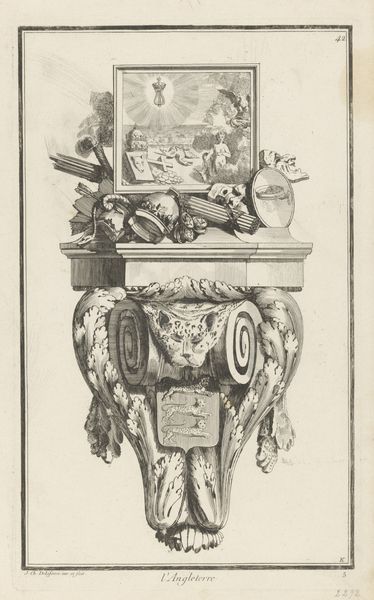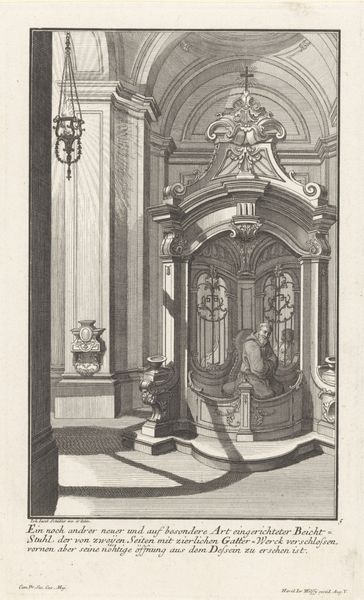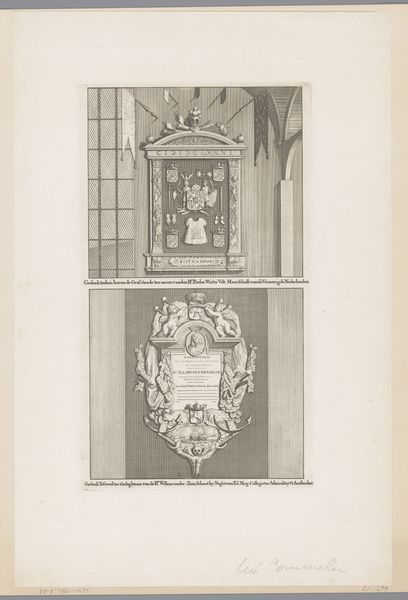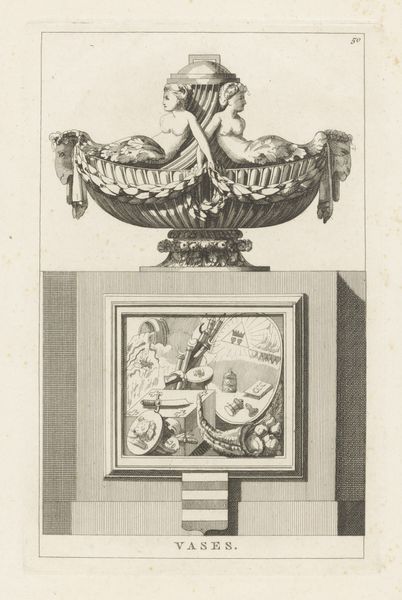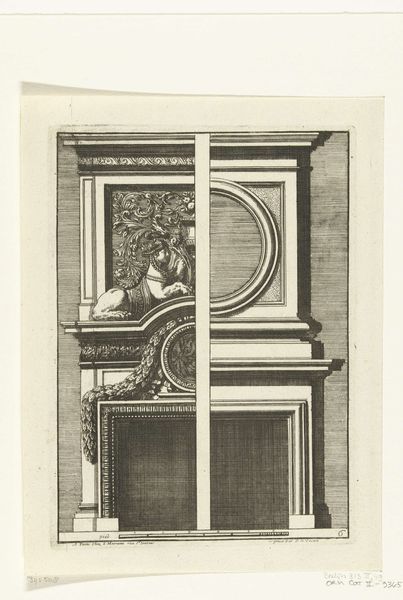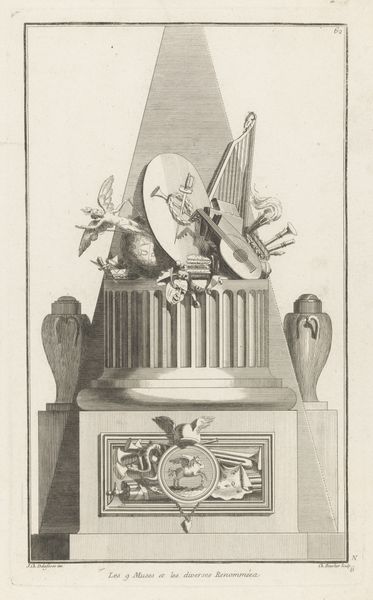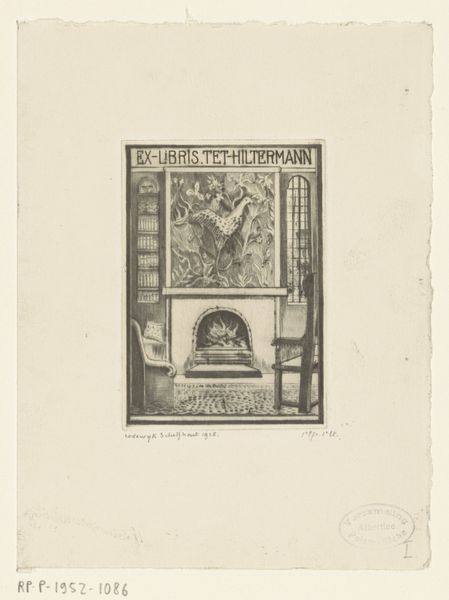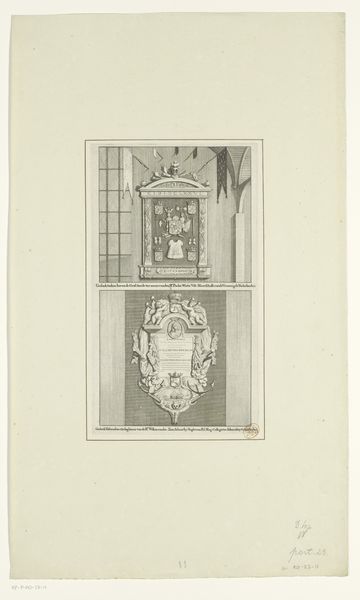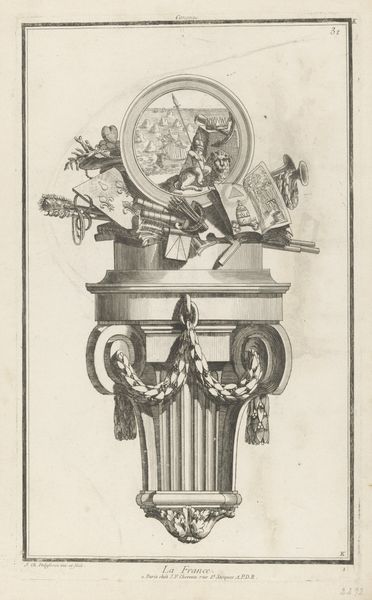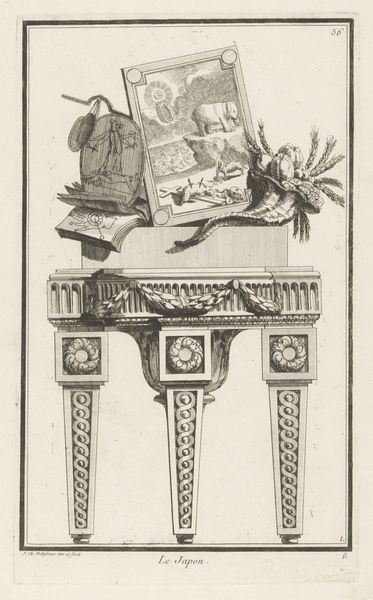
Dimensions: height 381 mm, width 233 mm
Copyright: Rijks Museum: Open Domain
Curator: Stepping up to this intricate engraving, you’re faced with “Abraham, Moses, and Solomon,” a piece etched between 1768 and 1771. Currently held at the Rijksmuseum, this artwork presents an intriguing tableau rooted in both history and allegory. Editor: Wow, my first thought? It’s intensely architectural but then also… weirdly unbalanced? The stark geometric shapes contrast with these flowing, almost surreal vignettes tacked on either side. I feel drawn in but also a bit lost, like stumbling into someone's very organized fever dream. Curator: It certainly possesses a constructed artificiality that contrasts to, say, earlier renaissance history-painting. Here, we see clear allegorical elements blended within that historical framework. How does this intersect with your personal feeling of 'unbalance'? Editor: I think that is precisely because of those allegorical trappings. They seem deliberately placed, like props, hinting at deeper stories while remaining just out of reach. This makes it conceptually weighty while, aesthetically, something like a stage set. What historical stories or allegories are presented in the engraving? Curator: The engraving attempts to portray a grand historical sweep in two discrete blocks, presenting key figures across biblical history, from Abraham to Solomon. Its allegorical component encourages us to consider ideas of lineage and transition—connecting the visual symbolism within to broader cultural understandings of history, legacy, and power in late 18th-century Europe. Think empire-building! Editor: Right. I suppose those figures at the base add to that sense of legacy. But you know, for a piece so concerned with history and power, the choice of medium - printmaking - seems… democratic? Almost rebellious, for the time, compared to large oil paintings for nobility. Curator: Exactly. It opens up fascinating avenues when looking at questions surrounding art, access, and dissemination of knowledge. The very nature of engraving makes the historical and allegorical dimensions accessible to a wider audience. Editor: Well, I’m finding it strangely relevant in our own time where truth and storytelling are being constantly re-negotiated across visual media. What’s powerful is how art forces you to pause and disentangle everything! Curator: Agreed. The complex intersections between history, representation, and the artistic medium can prompt some valuable conversations.
Comments
No comments
Be the first to comment and join the conversation on the ultimate creative platform.

